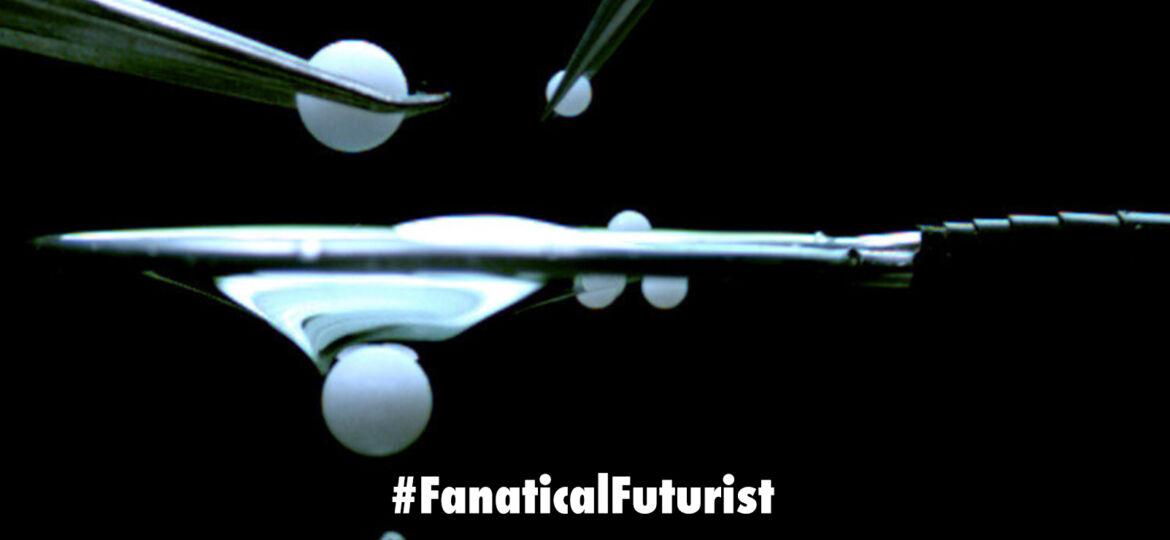
WHY THIS MATTERS IN BRIEF
Filters may be boring but they play a vital role in our everyday lives, from healthcare and transportation, to the food and drinks we consume.
Filters have increasingly been hitting the headlines recently, especially graphene ones that could help us end future water shortages by turning sewage and lake water into pure drinking water in just one step, but irrespective of the clever technologies we use to make them they all work, in principle at least, in the same way – the smaller the mesh the smaller the particles are that get let through. But what if you could create a filter that could filter any size of particle in just one step irrespective of what you threw at it, and irrespective of whatever was contained in the sample?
That’s the promise of a new type of filter that’s “straight out of science fiction.” A team of mechanical engineers from Pennsylvania State University in the US have developed a liquid membrane that acts as a “reverse filter” which lets large objects through while blocking small ones. The self-healing, “stabilised liquid material,” which mimics many of the properties of a cell membrane, acts counter intuitively and is, arguably, the polar opposite of a traditional filter.
Filters are amongst the simplest and easiest to understand tools that there are. If you fill up a sieve with, for example, castor sugar and dried peas, then give it a shake, the holes in the sieve will allow the fine sugar particles to flow through, leaving behind the relatively large peas. It’s a principle that we use in everything from coffee filters to highly sophisticated purification systems like the ones used in healthcare and even our car engines.
But what if it was possible to create a filter that worked in exactly the opposite way? One that let the peas through, yet left behind the sugar? That is the idea behind the Penn State team’s research, which uses a variety of liquid membranes to create reverse filters.
The basic idea is that these membranes are suspended in a ring, like soap solution in a bubble blowing toy. These membranes are self-healing, much like the layer of surface tension on the top of a glass of water. That is, if you poke a finger or other object through the membrane, it closes around it. Remove the object, and the hole closes up.
But the clever bit is that such membranes can also let large objects through while blocking smaller ones. This is because instead of using holes in the membrane for separation, the membrane uses the object’s kinetic energy as it hits the membrane.
“Typically, a smaller object is associated with lower kinetic energy due to its smaller mass,” says Tak-Sing Wong, the Wormley Family Early Career Professor and assistant professor of mechanical and biomedical engineering. “So, the larger object with a higher kinetic energy will pass through the membrane, while the smaller object with lower kinetic energy will be retained.”
Formed by water and one of a variety of substances that stabilizes on the interface between liquid and air, the membrane is similar to that of a living cell in structure, with the first prototypes being formed from soap. This was later modified to make it stronger as well as giving it antibacterial and odour-neutralization properties. It can also be made longer lasting or impermeable to certain gases.
The Penn State team sees a variety of applications for the new membrane once perfected. It could, for example, be used as a surgical film in disaster areas or battlefields to avoid infection. Because it’s self-healing, it could even act as a sort of mini operating room, which could be set over a wound while surgeons pass their instruments through the membrane while the germs are left behind.
“The membrane filter could potentially prevent germs, dust or allergens from reaching an open wound, while still allowing a doctor to perform surgery safely,” says Wong. “This membrane could make this possible.”
The research was published in Science Advances.
Source: Penn State
















